Film Boiling around a Finite Size Cylindrical Specimen—A Transient Conjugate Heat Transfer Approach
Abstract
Featured Application
Abstract
1. Introduction
- Reconstruction of the temperature gradient at the vapor–liquid interface in the mass transfer model.
- Adequate turbulence modeling.
2. Materials and Methods
2.1. Description of the Experiment
2.2. Mathematical Modeling
2.2.1. Interphase Heat Transfer
2.2.2. Turbulent Flow
2.2.3. The “Frozen Turbulence” Approach
2.2.4. The Estimation of the Turbulent Kinetic Energy Value
2.3. Computational Modeling
2.3.1. Description of the Case and Geometry
2.3.2. Boundary Conditions
2.3.3. Initial Conditions
2.3.4. Time-Stepping Procedure Applied in the Simulation
3. Results
3.1. Temperature Distribution
3.2. Comparison of Calculated Heat Transfer Coefficients
3.3. The Applied Turbulent Kinetic Energy Value
4. Conclusions
- The shared velocity field values at the interface accurately represented the interface behavior, also in the case of more complex interface evolution.
- The application of the dispersed turbulence model is necessary in order to correctly estimate the temperature distribution in a solid; that is, the BIT may be assumed in the present context of pool film boiling.
- The application of Kelvin–Helmholtz instability theory in estimation of TKE magnitudes was found to be very straightforward when used in conjunction with boundary layer theory in estimation of the necessary velocity input.
- The obtained heat transfer coefficient values exhibit a cyclic character, the same as the evolution of the vapor–liquid interface, as shown by other authors.
- The obtained heat transfer coefficients only locally enter the prescribed error bandwidth of ±15%, whilst the average value is slightly above 30%.
- The temperature distribution in a solid material agrees with the measured values in, say, ~10% of total duration of the film boiling phase.
- The selected turbulence model exhibited a realistic value of turbulent viscosity inside the vapor film, which may be addressed to usage of the Cμ factor that, among other variables, depends on strain rate.
Author Contributions
Funding
Institutional Review Board Statement
Informed Consent Statement
Data Availability Statement
Acknowledgments
Conflicts of Interest
Appendix A

References
- Nichita, B.A. An Improved CFD Tool to Simulate Adiabatic and Diabatic Two-Phase Flows; EPFL: Lausanne, Switzerland, 2010. [Google Scholar]
- Magnini, M. CFD Modeling of Two-Phase Boiling Flows in the Slug Flow Regime with an Interface Capturing Technique. Ph.D. Thesis, Alma Mater Studiorum—Università di Bologna, Bologna, Italy, 2012. [Google Scholar]
- Sun, D.-L.; Xu, J.-L.; Wang, L. Development of a Vapor–Liquid Phase Change Model for Volume-of-Fluid Method in FLUENT. Int. Commun. Heat Mass Transf. 2012, 39, 1101–1106. [Google Scholar] [CrossRef]
- Kosseifi, N.E. Numerical Simulation of Boiling for Industrial Quenching Processes. Ph.D. Thesis, Ecole Nationale Supérieure des Mines de Paris, Paris, France, 2012. [Google Scholar]
- Sato, Y.; Ničeno, B. A Sharp-Interface Phase Change Model for a Mass-Conservative Interface Tracking Method. J. Comput. Phys. 2013, 249, 127–161. [Google Scholar] [CrossRef]
- Arévalo, R.; Antúnez, D.; Rebollo, L.; Abánades, A. Estimation of Radiation Coupling Factors in Film Boiling around Spheres by Mean of Computational Fluid Dynamics (CFD) Tools. Int. J. Heat Mass Transf. 2014, 78, 84–89. [Google Scholar] [CrossRef]
- Kharangate, C.R.; Mudawar, I. Review of Computational Studies on Boiling and Condensation. Int. J. Heat Mass Transf. 2017, 108, 1164–1196. [Google Scholar] [CrossRef]
- Chen, G.; Nie, T.; Yan, X. An Explicit Expression of the Empirical Factor in a Widely Used Phase Change Model. Int. J. Heat Mass Transf. 2020, 150, 119279. [Google Scholar] [CrossRef]
- Sato, Y.; Niceno, B. Pool Boiling Simulation Using an Interface Tracking Method: From Nucleate Boiling to Film Boiling Regime through Critical Heat Flux. Int. J. Heat Mass Transf. 2018, 125, 876–890. [Google Scholar] [CrossRef]
- Saini, N.; Bolotnov, I.A. Two-Phase Turbulence Statistics from High Fidelity Dispersed Droplet Flow Simulations in a Pressurized Water Reactor (PWR) Sub-Channel with Mixing Vanes. Fluids 2021, 6, 72. [Google Scholar] [CrossRef]
- Wang, J.; Li, Y.; Wang, L. Numerical Study on Pool Film Boiling of Liquid Hydrogen over Horizontal Cylinders. Energies 2022, 15, 1044. [Google Scholar] [CrossRef]
- Momoki, S.; Yamada, T.; Shigechi, T.; Kanemaru, K.; Yamaguchi, T. Film Boiling Around a Vertical Cylinder with Top and Bottom Horizontal Surfaces; American Society of Mechanical Engineers Digital Collection. In Proceedings of the ASME/JSME 2007 Thermal Engineering Heat Transfer Summer Conference, Vancouver, BC, Canada, 24 August 2009; pp. 611–619. [Google Scholar]
- Cukrov, A.; Sato, Y.; Boras, I.; Ničeno, B. A Solution to Stefan Problem Using Eulerian Two-Fluid VOF Model. Brodogr. Teor. Praksa Brodogr. Pomor. Teh. 2021, 72, 141–164. [Google Scholar] [CrossRef]
- Tchen, C.M. Mean Value and Correlation Problems Connected with the Motion of Small Particles Suspended in a Turbulent Fluid; Springer: Berlin, Germany, 1947. [Google Scholar]
- Markatos, N.C. The Mathematical Modelling of Turbulent Flows. Appl. Math. Model. 1986, 10, 190–220. [Google Scholar] [CrossRef]
- Hoppe, F.; Breuer, M. A Deterministic Breakup Model for Euler–Lagrange Simulations of Turbulent Microbubble-Laden Flows. Int. J. Multiph. Flow 2020, 123, 103119. [Google Scholar] [CrossRef]
- Philip, G. Measurement of Turbulence in an Annular Jet; University of Missouri: Rolla, MO, USA, 1972. [Google Scholar]
- Kimber, M.; Brigham, J.; Jana, A. Experimentally Validated Numerical Models of Non-Isothermal Turbulent Mixing in High Temperature Reactors; University of Pittsburgh: Pittsburgh, PA, USA, 2018. [Google Scholar]
- Ničeno, B.; Dhotre, M.T.; Deen, N.G. One-Equation Sub-Grid Scale (SGS) Modelling for Euler–Euler Large Eddy Simulation (EELES) of Dispersed Bubbly Flow. Chem. Eng. Sci. 2008, 63, 3923–3931. [Google Scholar] [CrossRef]
- Kashima, H.; Mori, N.; Mizutani, N. Visualization on Air Bubble Characteristics of the Surf Zone Breaking Waves. Proc. Coast. Eng. JSCE 2007, 54, 56–60. [Google Scholar] [CrossRef][Green Version]
- Mori, N.; Suzuki, T.; Kakuno, S. Experimental Study of Air Bubbles and Turbulence Characteristics in the Surf Zone. J. Geophys. Res. Ocean. 2007, 112, C05014. [Google Scholar] [CrossRef]
- Makris, C.V.; Memos, C.D.; Krestenitis, Y.N. Numerical Modeling of Surf Zone Dynamics under Weakly Plunging Breakers with SPH Method. Ocean Model. 2016, 98, 12–35. [Google Scholar] [CrossRef]
- Cascioli, E.; Buckingham, S.; Keijers, S.; Tichelen, K.V.; Kenjeres, S. Numerical and Experimental Analysis of a Planar Jet with Heated Co-Flow at Medium and Low Prandtl-Number Values. Nucl. Eng. Des. 2020, 361, 110570. [Google Scholar] [CrossRef]
- Sakurai, A.; Shiotsu, M.; Hata, K. A General Correlation for Pool Film Boiling Heat Transfer From a Horizontal Cylinder to Subcooled Liquid: Part 1—A Theoretical Pool Film Boiling Heat Transfer Model Including Radiation Contributions and Its Analytical Solution. J. Heat Transf. 1990, 112, 430–440. [Google Scholar] [CrossRef]
- Javed, B.; Watanabe, T.; Himeno, T.; Uzawa, S. Experimental Investigation on Characteristics of Liquid Film at Different Angle of Attack. JGPP 2017, 9, 22–31. [Google Scholar] [CrossRef]
- Hillier, A.; Doorsselaere, T.V.; Karampelas, K. Estimating the Energy Dissipation from Kelvin–Helmholtz Instability Induced Turbulence in Oscillating Coronal Loops. ApJL 2020, 897, L13. [Google Scholar] [CrossRef]
- Yamada, T.; Shigechi, T.; Momoki, S.; Kanemaru, K. An Analysis of Film Boiling around a Vertical Finite-Length Cylinder. Rep. Fac. Eng. Nagasaki Univ. 2001, 31, 1–11. [Google Scholar]
- Gauss, F.; Lucas, D.; Krepper, E. Grid Studies for the Simulation of Resolved Structures in an Eulerian Two-Fluid Framework. Nucl. Eng. Des. 2016, 305, 371–377. [Google Scholar] [CrossRef]
- Rohatgi, A. Webplotdigitizer, Version 4.5; Pacifica, CA, USA. 2021. Available online: https://automeris.io/WebPlotDigitizer (accessed on 25 May 2023).
- Galović, A. Selected Chapters from Conduction. Unpublished Manuscript, University of Zagreb, Faculty of Mechanical Engineering and Naval Architecture (FSB): Zagreb, Croatia, 2003. (In Croatian)
- Halasz, B.; Galović, A.; Boras, I. Toplinske Tablice; FSB: Zagreb, Croatia, 2013. [Google Scholar]
- Tsui, Y.-Y.; Lin, S.-W.; Lai, Y.-N.; Wu, F.-C. Phase Change Calculations for Film Boiling Flows. Int. J. Heat Mass Transf. 2014, 70, 745–757. [Google Scholar] [CrossRef]
- Juric, D.; Tryggvason, G. Computations of Boiling Flows. Int. J. Multiph. Flow 1998, 24, 387–410. [Google Scholar] [CrossRef]
- Yamada, T. Study on Film Boiling Heat Transfer around a Vertical Cylinder with Top and Bottom Horizontal Surfaces; Nagasaki University: Nagasaki, Japan, 2007. [Google Scholar]
- Maharshi, S. Computational Modelling of Liquid Jet Impingement onto Heated Surface. Ph.D. Thesis, Technische Universität, Darmstadt, Germany, 2017. [Google Scholar]
- Liu, Y.; Pointer, W.D. Eulerian Two-Fluid RANS-Based CFD Simulations of a Helical Coil Steam Generator Boiling Tube; Oak Ridge National Lab. (ORNL): Oak Ridge, TN, USA, 2017. [Google Scholar]
- Svendsen, I.A. Analysis of Surf Zone Turbulence. J. Geophys. Res. Ocean. 1987, 92, 5115–5124. [Google Scholar] [CrossRef]
- Zimmer, M.D.; Bolotnov, I.A. Exploring Two-Phase Flow Regime Transition Mechanisms Using High-Resolution Virtual Experiments. Nucl. Sci. Eng. 2020, 194, 708–720. [Google Scholar] [CrossRef]
- Vinkovic, I.; Aguirre, C.; Simoëns, S.; Gorokhovski, M. Large Eddy Simulation of Droplet Dispersion for Inhomogeneous Turbulent Wall Flow. Int. J. Multiph. Flow 2006, 32, 344–364. [Google Scholar] [CrossRef]
- Herman, K. Teorija Elastičnosti i Plastičnosti; Udžbenici Sveučilišta u Zagrebu = Manualia Universitatis studiorum Zagrabiensis; 1. izd.; Element: Zagreb, Croatia, 2009; ISBN 978-953-197-682-4. [Google Scholar]
- Heschl, C. Ein Beitrag zur Numerischen Berechnung Turbulenter Raumluftströmungen. Ph.D. Thesis, Fakultät für Maschinenbau der Technischen Universität Graz, Graz, Austria, 2010. [Google Scholar]
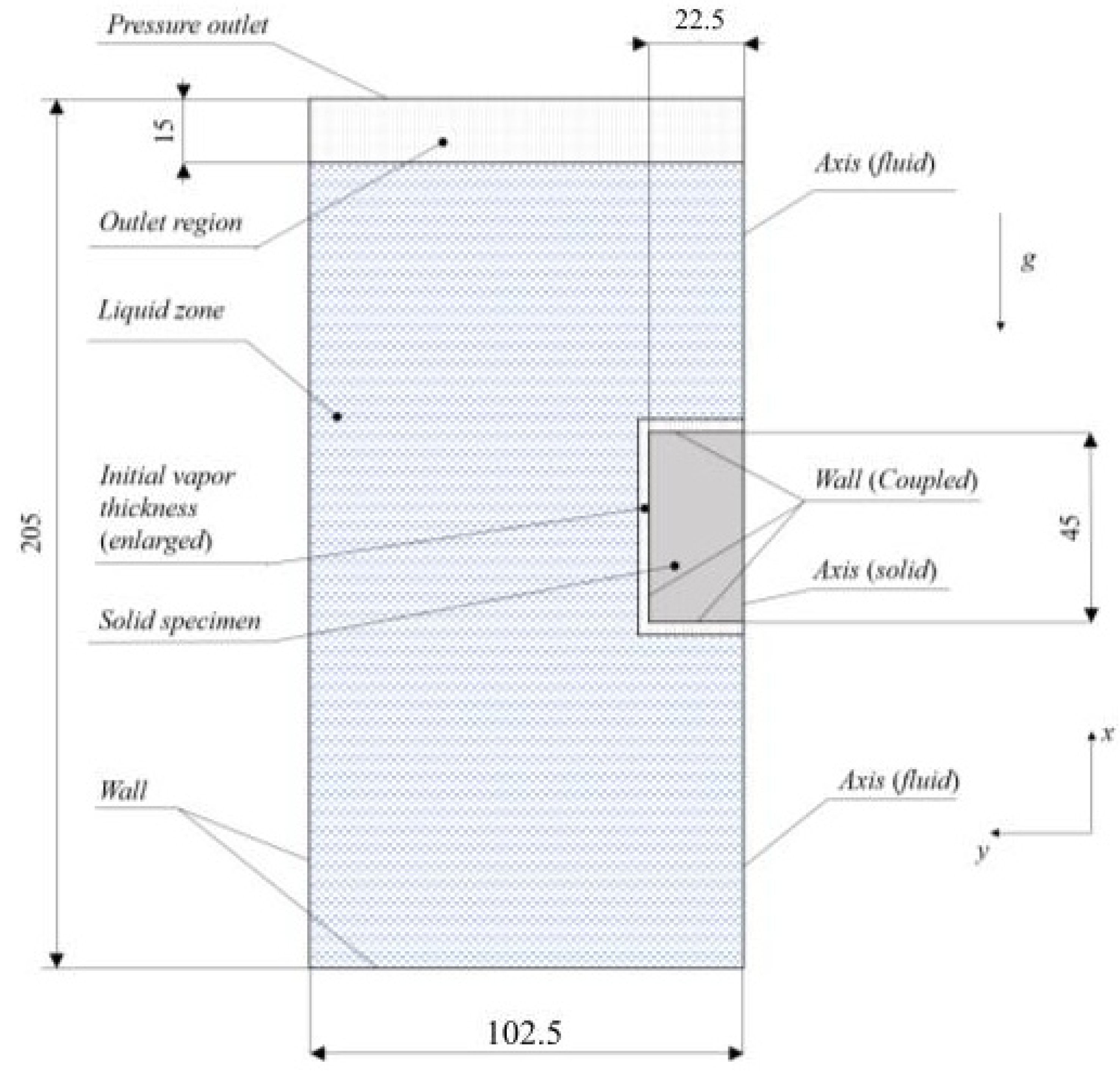
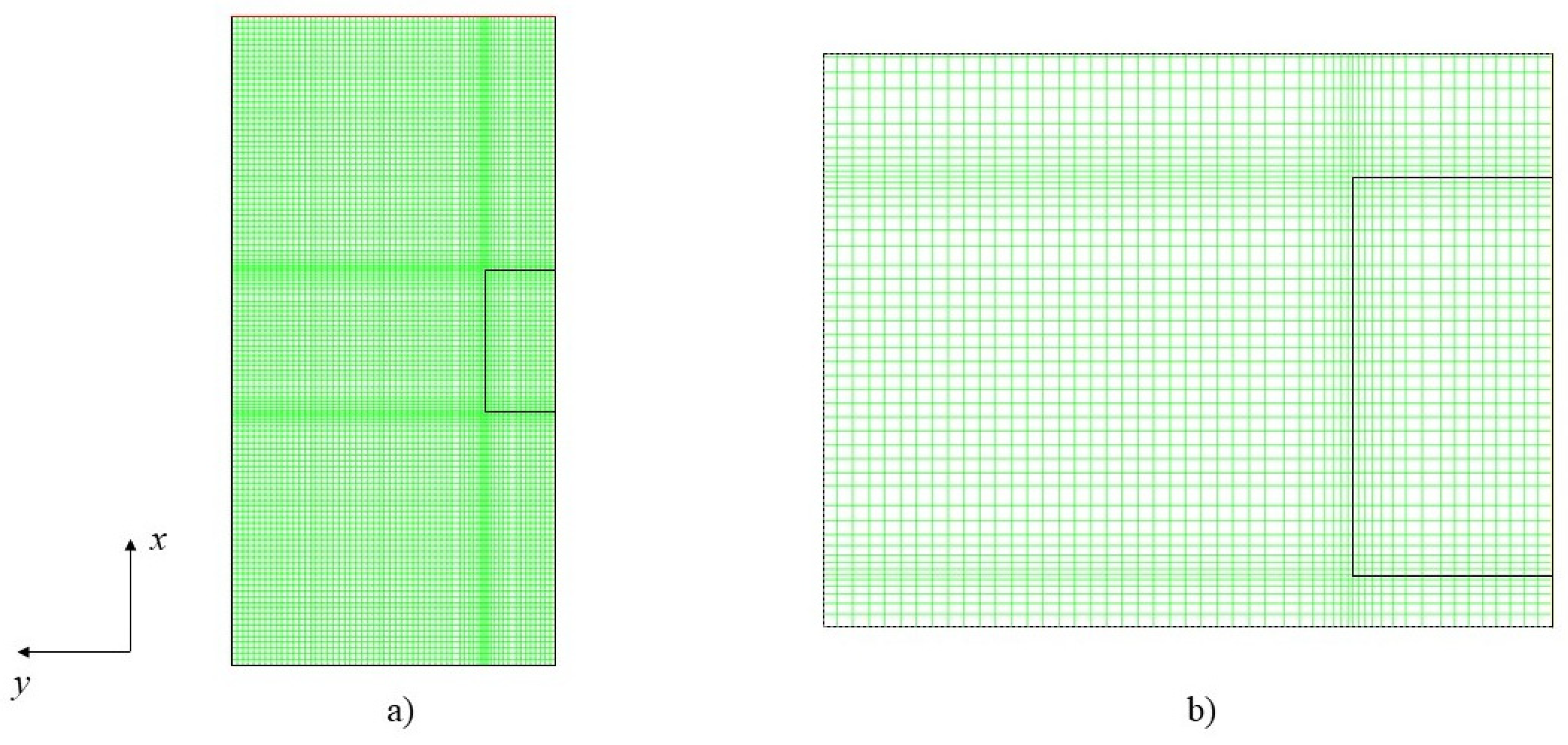
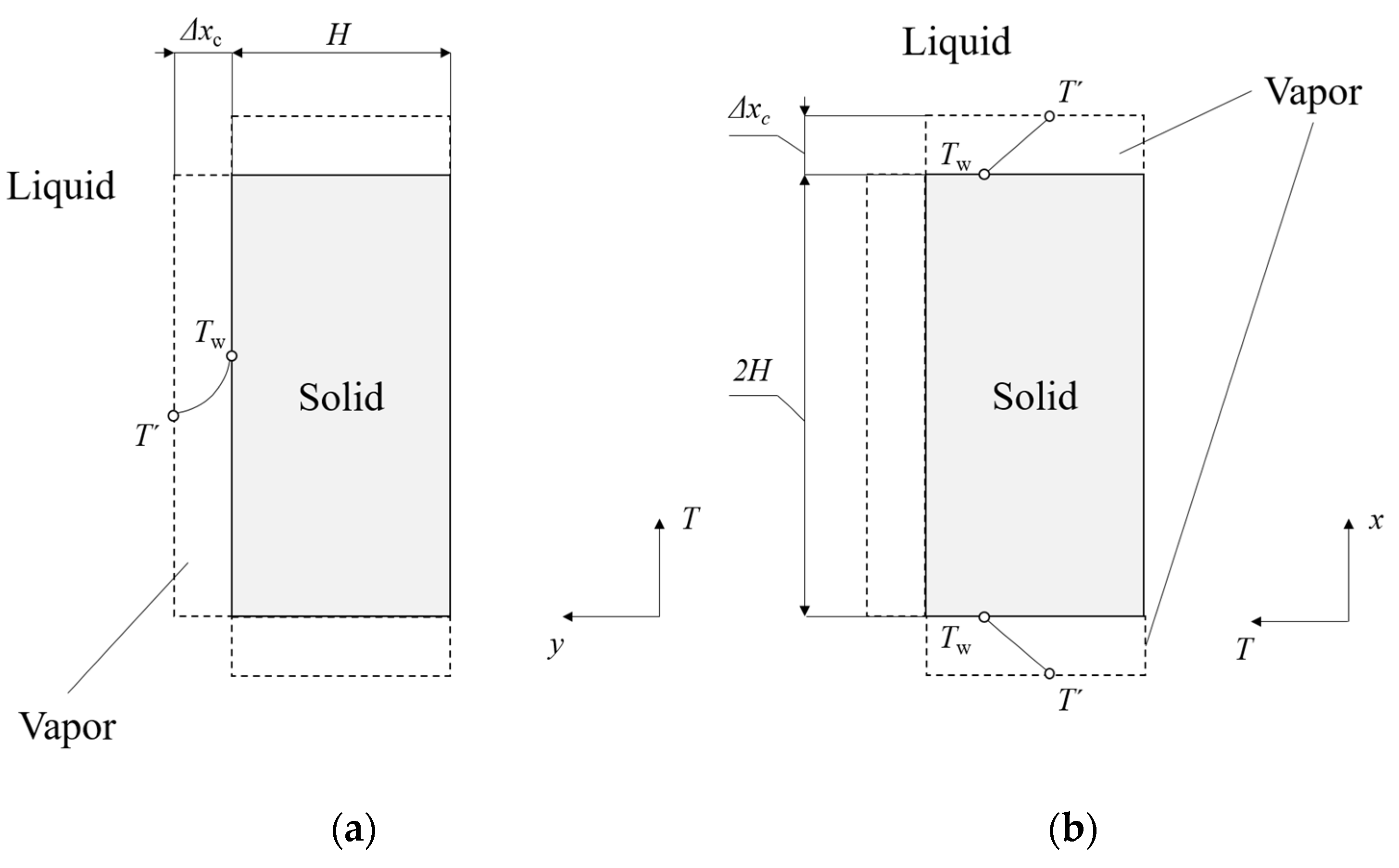
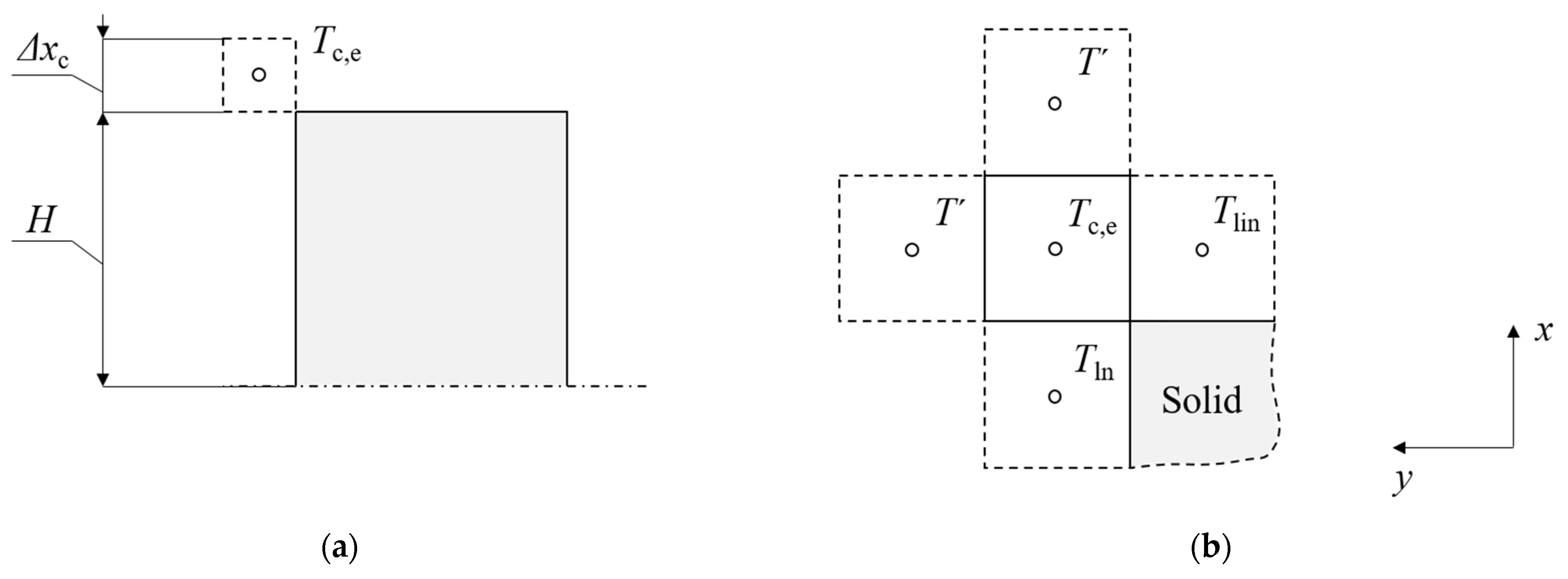
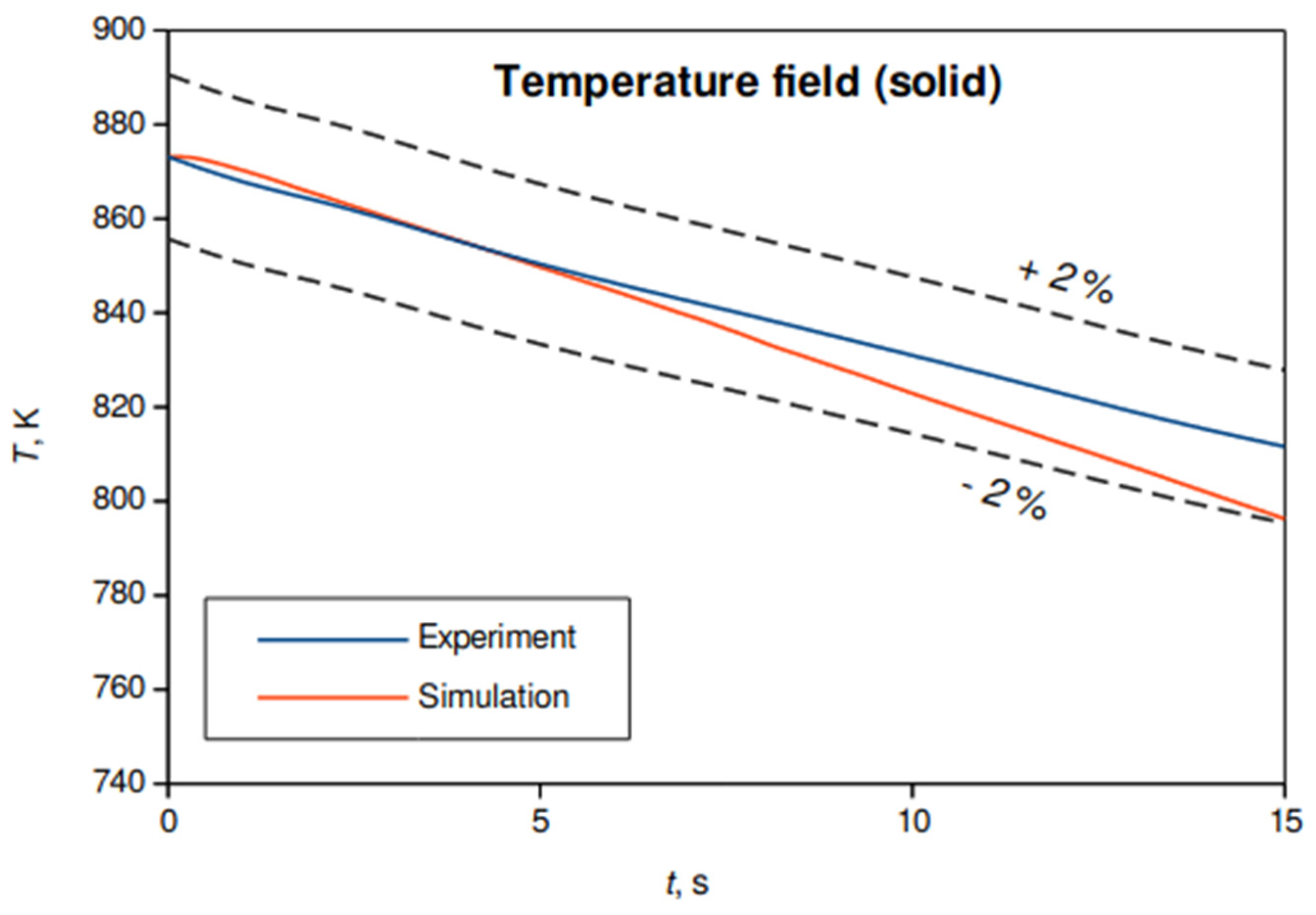
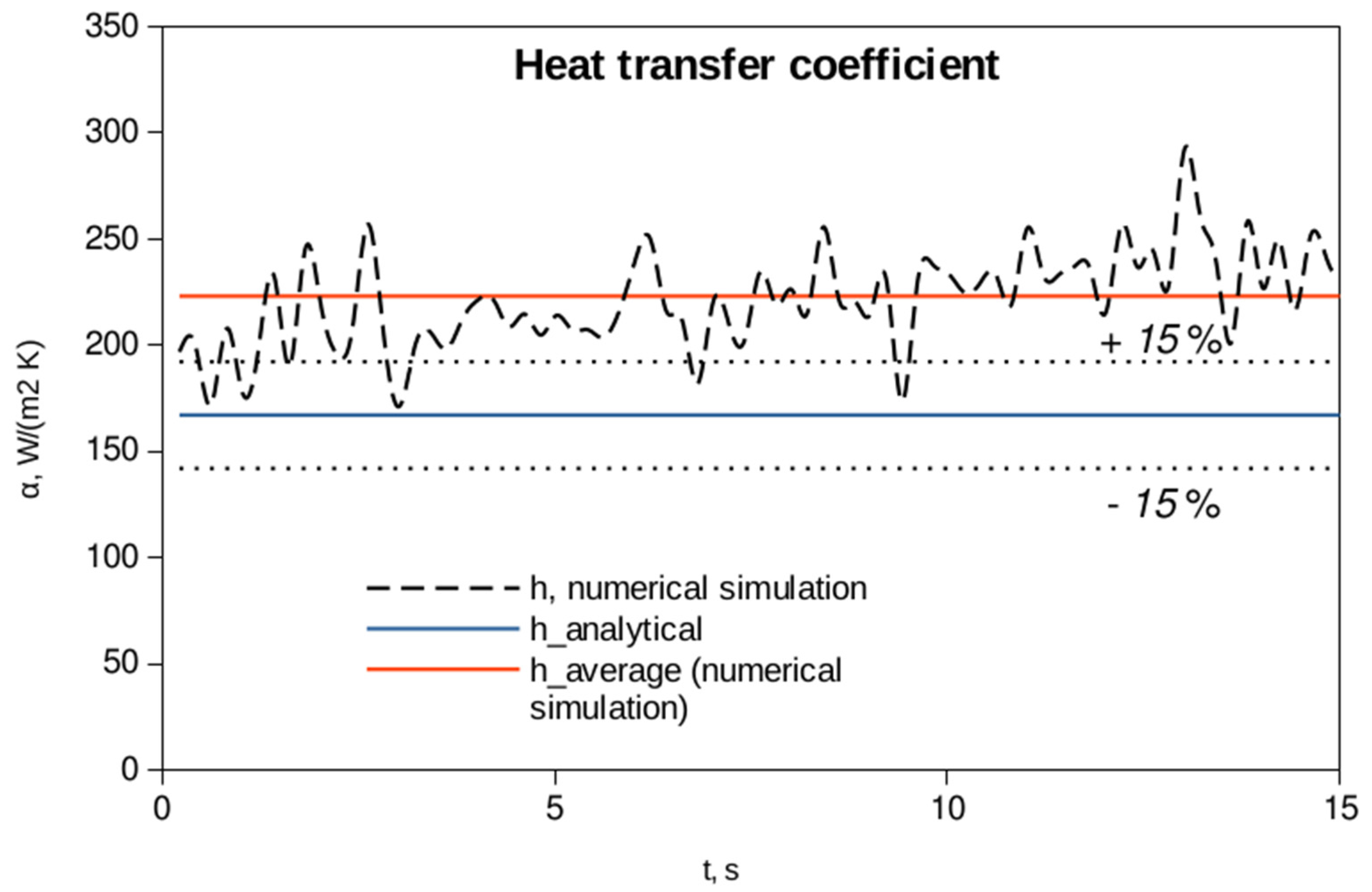
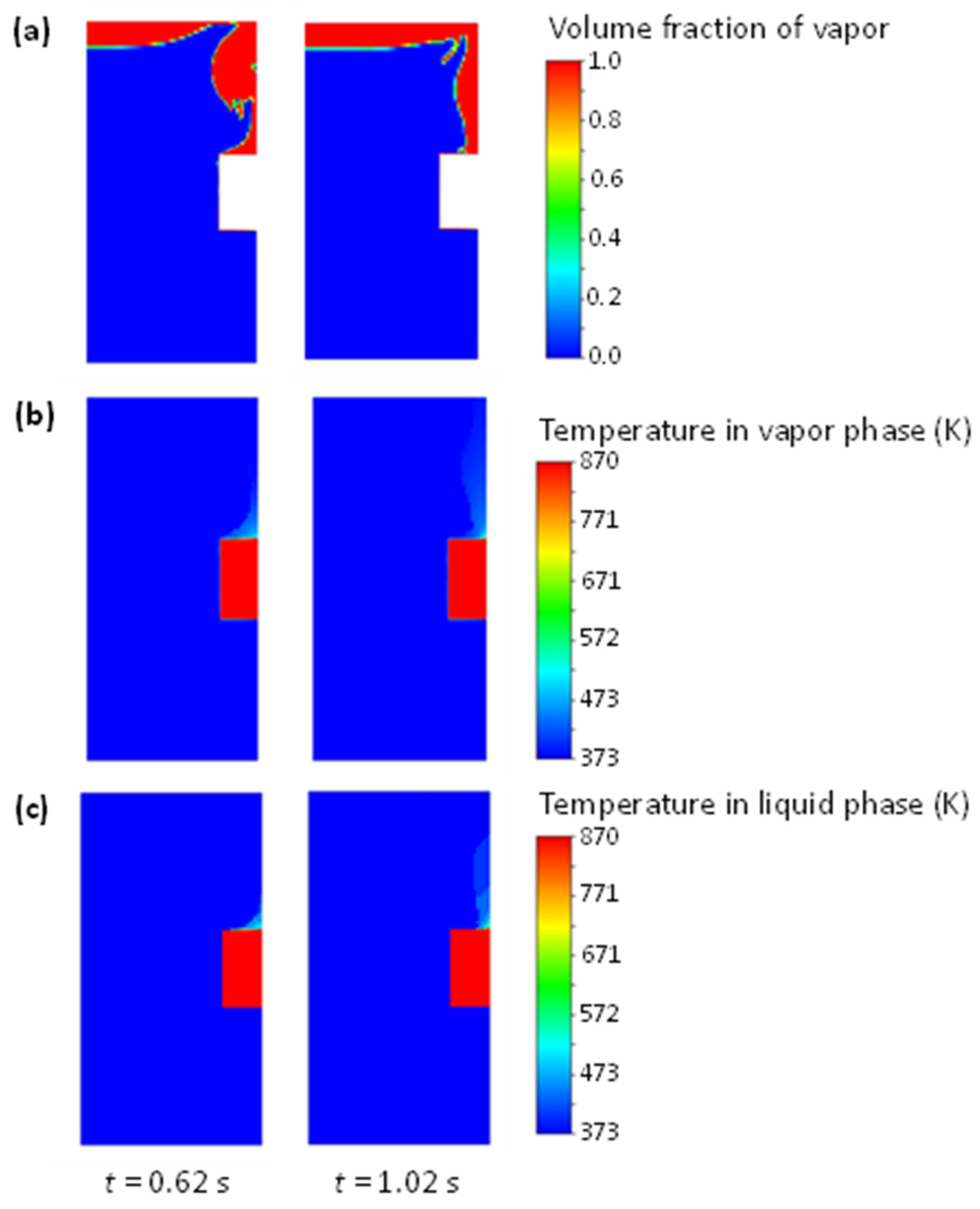
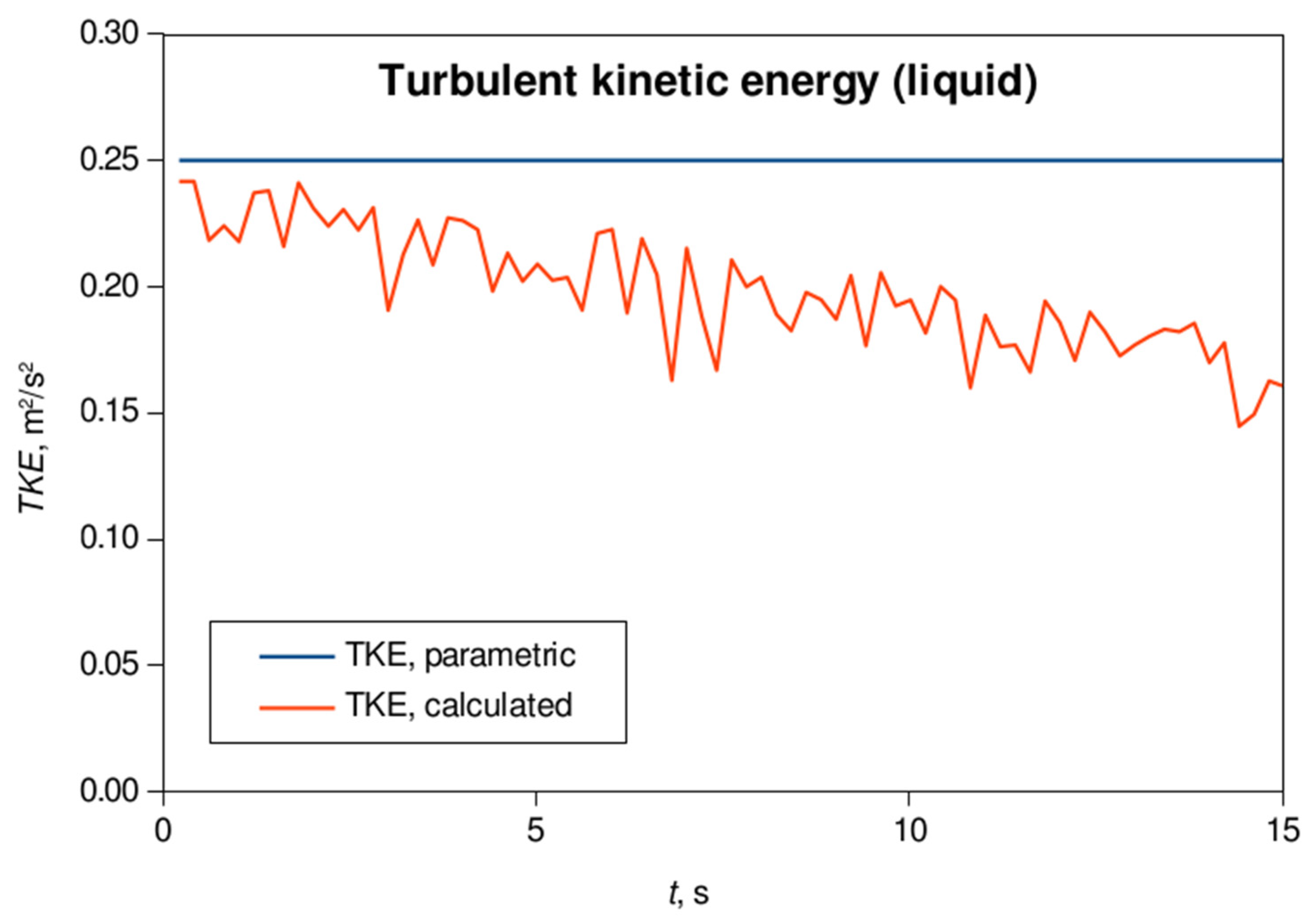

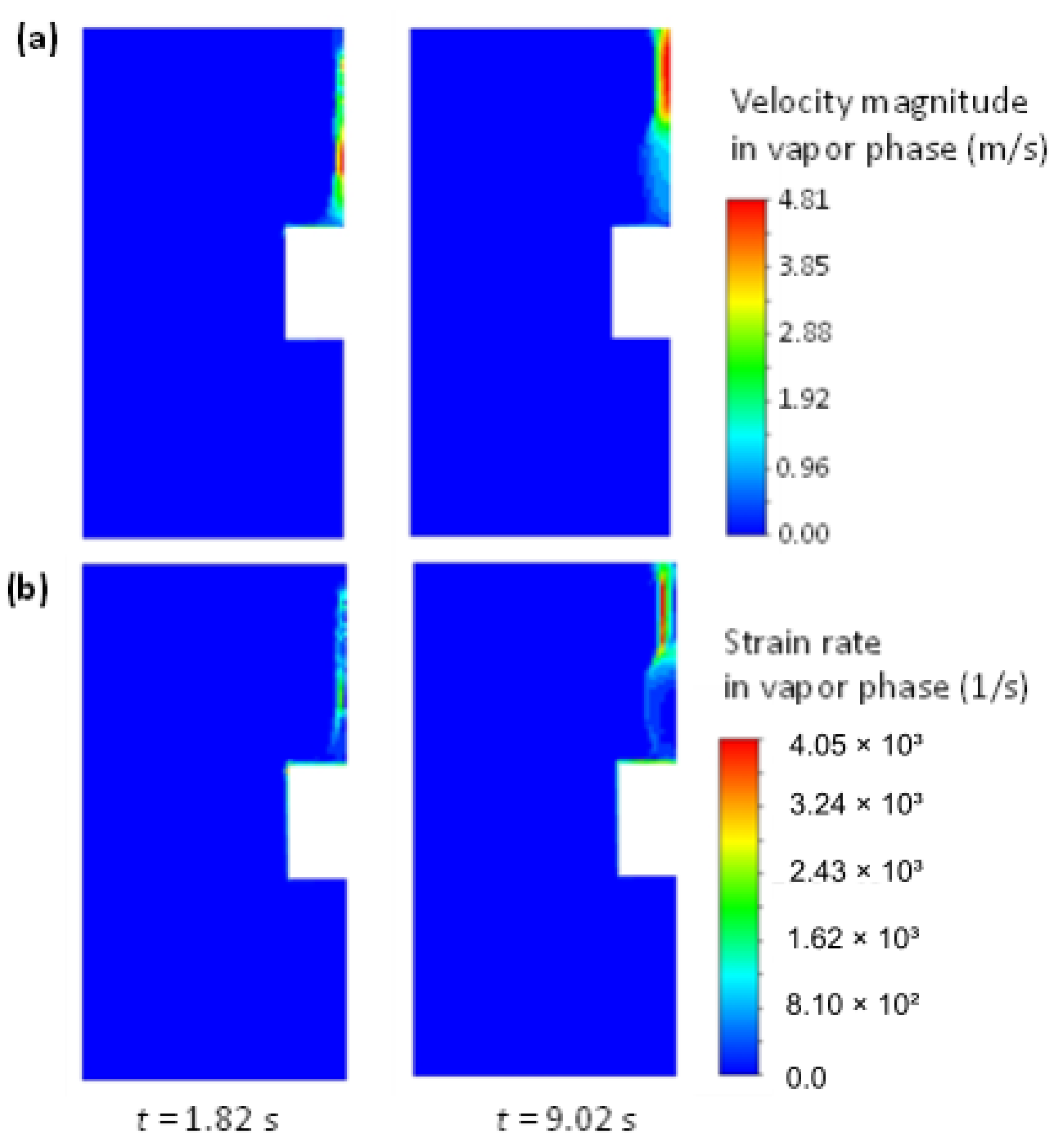
| Phase | , kg/m3 | cp, kJ/(kg K) | λ, W/(m K) | Pr, - |
|---|---|---|---|---|
| Vapor | 0.35 | 2.04 | 0.041 | 0.91 |
| Quantity | Simulation; d × L = 45 × 45 mm | Experiment [31]; d × L = 32 × 32 mm |
|---|---|---|
| Flow field |  | 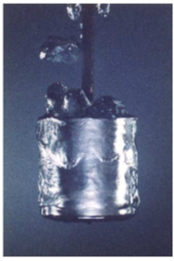 |
| t, s | 10.22 | 15 |
| ΔTw, K | 444.9 | ~345 |
Disclaimer/Publisher’s Note: The statements, opinions and data contained in all publications are solely those of the individual author(s) and contributor(s) and not of MDPI and/or the editor(s). MDPI and/or the editor(s) disclaim responsibility for any injury to people or property resulting from any ideas, methods, instructions or products referred to in the content. |
© 2023 by the authors. Licensee MDPI, Basel, Switzerland. This article is an open access article distributed under the terms and conditions of the Creative Commons Attribution (CC BY) license (https://creativecommons.org/licenses/by/4.0/).
Share and Cite
Cukrov, A.; Sato, Y.; Boras, I.; Ničeno, B. Film Boiling around a Finite Size Cylindrical Specimen—A Transient Conjugate Heat Transfer Approach. Appl. Sci. 2023, 13, 9144. https://doi.org/10.3390/app13169144
Cukrov A, Sato Y, Boras I, Ničeno B. Film Boiling around a Finite Size Cylindrical Specimen—A Transient Conjugate Heat Transfer Approach. Applied Sciences. 2023; 13(16):9144. https://doi.org/10.3390/app13169144
Chicago/Turabian StyleCukrov, Alen, Yohei Sato, Ivanka Boras, and Bojan Ničeno. 2023. "Film Boiling around a Finite Size Cylindrical Specimen—A Transient Conjugate Heat Transfer Approach" Applied Sciences 13, no. 16: 9144. https://doi.org/10.3390/app13169144
APA StyleCukrov, A., Sato, Y., Boras, I., & Ničeno, B. (2023). Film Boiling around a Finite Size Cylindrical Specimen—A Transient Conjugate Heat Transfer Approach. Applied Sciences, 13(16), 9144. https://doi.org/10.3390/app13169144






